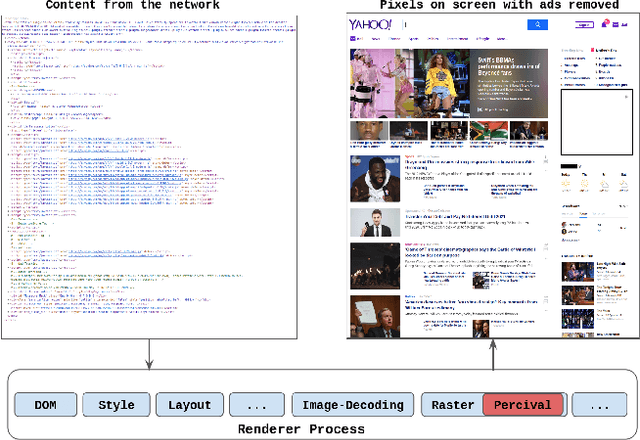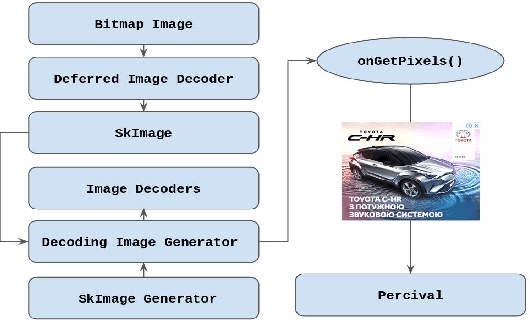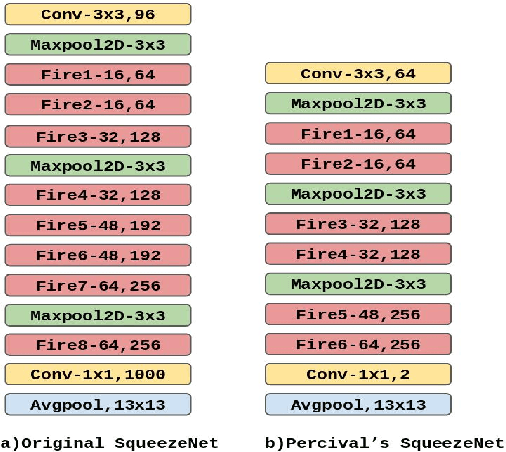Zain ul Abi Din
UC Davis
Percival: Making In-Browser Perceptual Ad Blocking Practical With Deep Learning
May 22, 2019



Abstract:Online advertising has been a long-standing concern for user privacy and overall web experience. Several techniques have been proposed to block ads, mostly based on filter-lists and manually-written rules. While a typical ad blocker relies on manually-curated block lists, these inevitably get out-of-date, thus compromising the ultimate utility of this ad blocking approach. In this paper we present Percival, a browser-embedded, lightweight, deep learning-powered ad blocker. Percival embeds itself within the browser's image rendering pipeline, which makes it possible to intercept every image obtained during page execution and to perform blocking based on applying machine learning for image classification to flag potential ads. Our implementation inside both Chromium and Brave browsers shows only a minor rendering performance overhead of 4.55%, demonstrating the feasibility of deploying traditionally heavy models (i.e. deep neural networks) inside the critical path of the rendering engine of a browser. We show that our image-based ad blocker can replicate EasyList rules with an accuracy of 96.76%. To show the versatility of the Percival's approach we present case studies that demonstrate that Percival 1) does surprisingly well on ads in languages other than English; 2) Percival also performs well on blocking first-party Facebook ads, which have presented issues for other ad blockers. Percival proves that image-based perceptual ad blocking is an attractive complement to today's dominant approach of block lists
 Add to Chrome
Add to Chrome Add to Firefox
Add to Firefox Add to Edge
Add to Edge